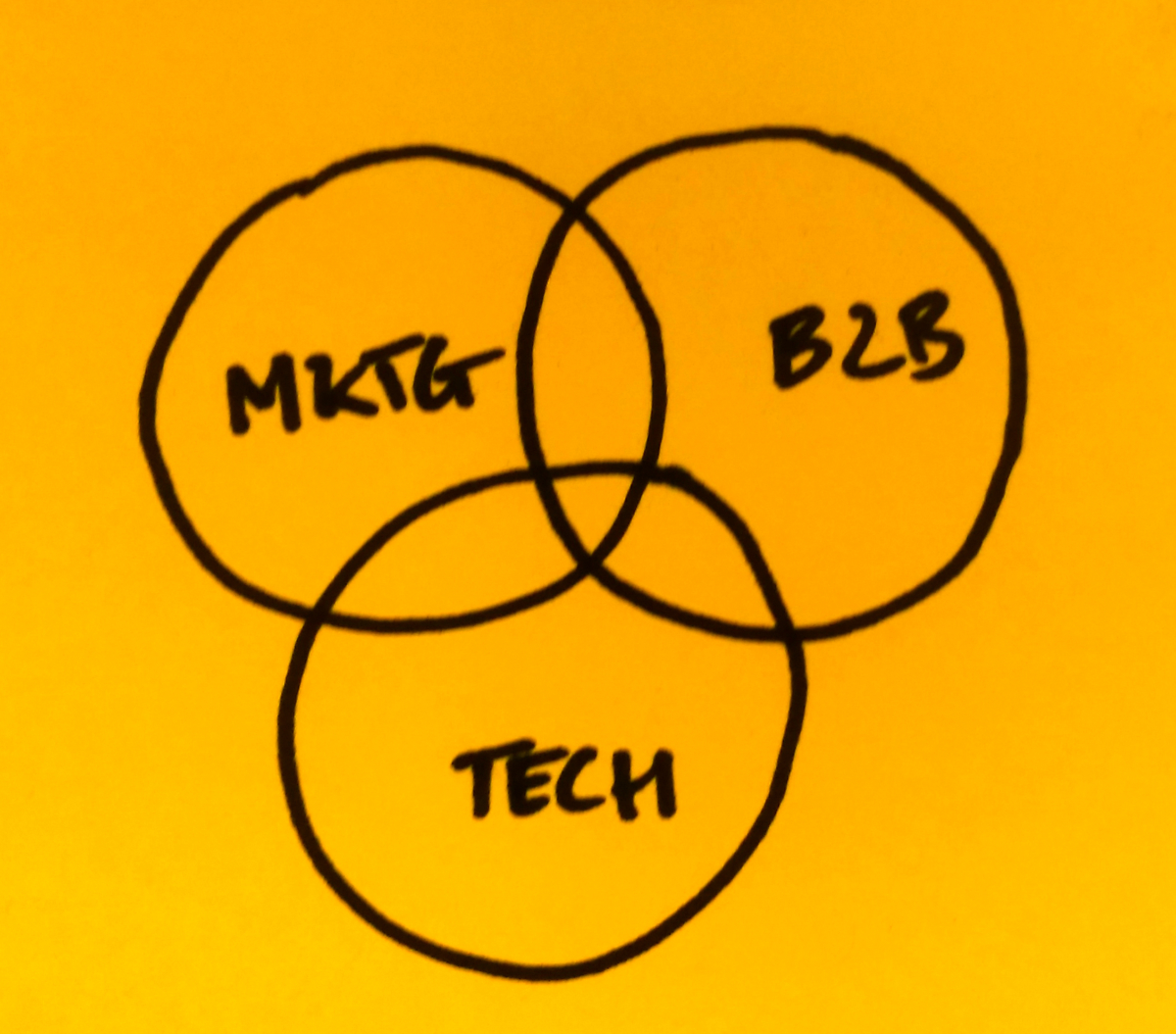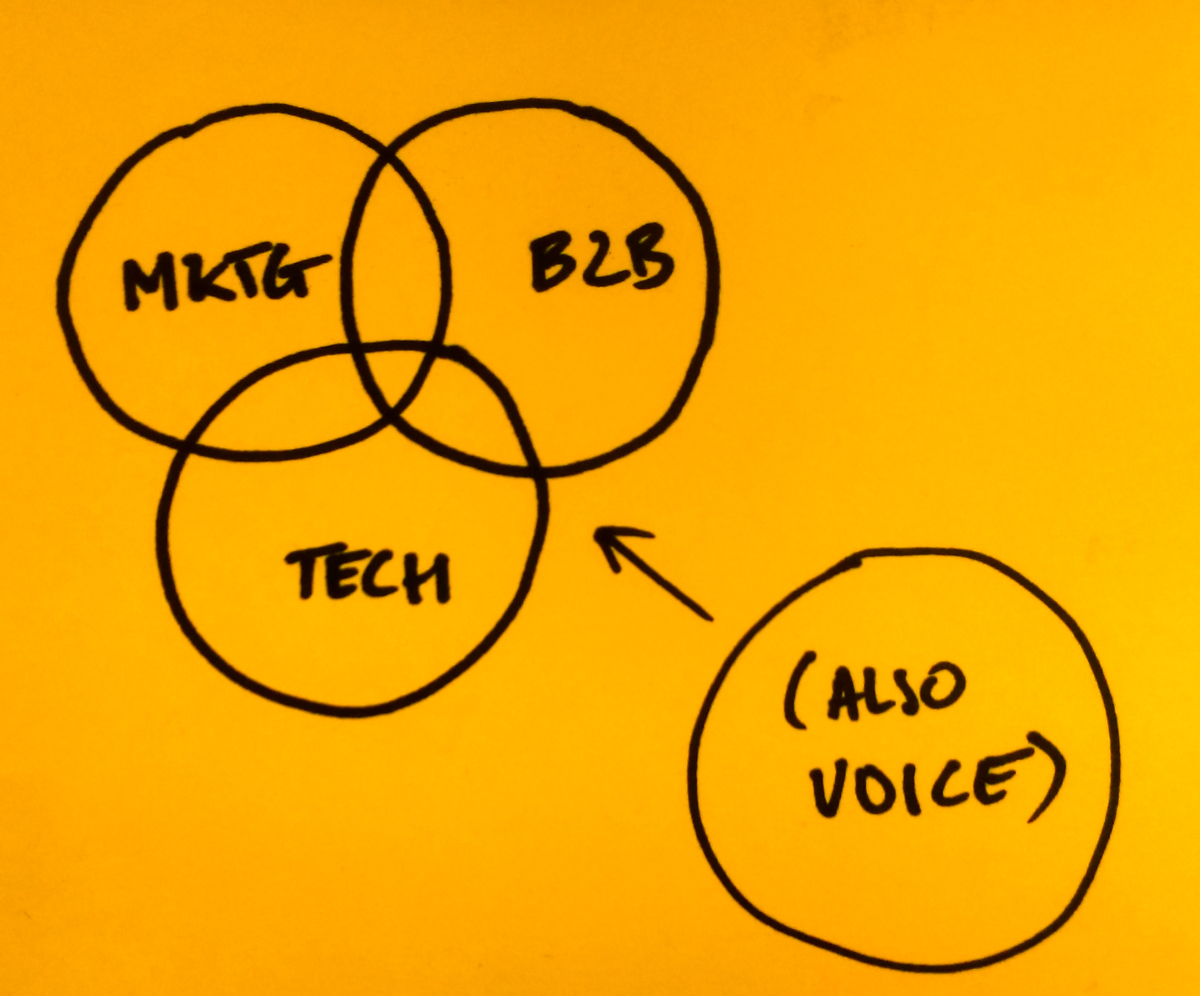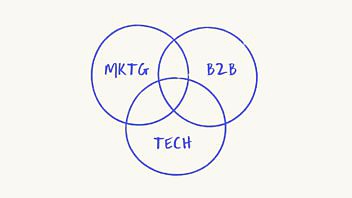Disclaimer: I always feel weird writing about writing. So if you don’t think you’d enjoy an esoteric, meta and borderline pretentious post about writing, here’s a gif of a cat in a box on some stairs.
Having spent several years mastering the art – nay, science – of B2B content marketing and copywriting, we’ve weighed up a range of different variables and attributes to scientifically deduce a complex formula for the ideal Velocity copywriter.

The ideal Velocity copywriter is someone who cares a little too much about at least two of these three things.
No wait.

The ideal Velocity copywriter is someone who cares a maybe-not-particularly-healthy amount about, like, two or three of these things.
Sure, it’s hard enough finding writing talent without applying a bunch of additional filters on top of it (a fact our recruiter Steve is becoming all too familiar with). But we’re picky that way.
And while it’s tempting to say something like ‘it’s all about quality not quantity, man…’ there’s actually a more fundamental reason why this overlap matters.
It matters because B2B writing isn’t just writing.
It isn’t just about sentence structures and story arcs and subjunctives (or needless alliteration). It’s about all those wonderfully challenging things.
And then some.
The confluence of elements that make up B2B narratives
In B2B, a good story is a compelling explanation of where the world was, where the world’s going and where the world should be going.
You can (and should) think about structure and grammar all you like, but at the end of the day, you’re going to need to figure out how this world operates.
You’re going to need to figure out how your reader/viewer/listener thinks about their problems, what they really give a shit about and why they’re so god damn averse to change.
You’re going to need to figure out what the old technological approach was, why the new technological approach you’re pushing is better and which aspects of that approach lend themselves to a pithy narrative.
You’re going to have to look your client in the eye and push them to give you the truest version of the story, instead of the most convenient.
Once you have all of that, you can write.
The thing about voice
To most folks, tone of voice is a sort of superficial layer on top of a body of text. It’s a kind of veneer of personality that you ‘apply’ to copy.
And to be fair, there is some truth to that.
The mechanics of voice can be quite generic. There’s a verve and speed and rhythm to long sentences that rattle off sequences of adjectives and nouns and verbs. There’s a bluntness to short ones.
There’s a sort of formal intelligence (arrogance?) you demonstrate when you use big words like ‘perspicacity’. And there’s a casual intelligence you demonstrate when you say things like ‘things’.
But you can’t authentically use any of these tools in the writer’s toolkit until you have an opinion about the world you’re writing to.
Because voice is a demonstration of how you feel about something. It’s a way of signalling what’s important to you and what isn’t.
And in B2B, that isn’t really a choice you can make until you’ve figured out how you feel about the tech, the market, the people and the companies involved. Because if voice is a demonstration of personality, then the personality you’re demonstrating is necessarily a reflection of all these other intermingling elements.
The other thing about voice
It’s fun.
Once you’ve deconstructed, reconstructed and then re-deconstructed this whole mess of complexity a bunch of times and you hit the page, a well-told B2B story is incredibly satisfying. (And dare I say it’s even meaningful.)
Because you aren’t just a marketer or a tech nerd or a business fetishist* when you’re telling B2B stories well. You’re all those things.
And then some.
–
*For want of a better term.

Enjoyed this article?
Take part in the discussion








Comments
Sue Katula StoneArch May 20th, 2016
Love this! Voice and tone are so underrated–and so critical if you want to connect in a meaningful way to your audience. I forwarded this to our entire creative team. And thanks for making me feel proud to be a B2B writer.
Harendra Kapur May 23rd, 2016
Cheers Sue. Underrated is good. It means it’s still worth differentiating on.
Jay Manahan May 22nd, 2016
Always refreshing to read (and emulate) Velocity’s take on B2B marketing–especially on copywriting. But I’m curious: can you describe the fits that Velocitoids throw whenever they see “innovative,” “world-class,” “cutting-edge,” or “state-of-the-art” without context in any piece of B2B tech marketing?
Harendra Kapur May 23rd, 2016
Ha! Well suffice it to say it isn’t a positive reaction. It’s weird but I think you can learn a lot from the places where a company uses words like those without context. You can see what they’re trying to signal – what they know is important – even if they’re doing it in an obtuse way.
Lionel Msource May 30th, 2016
I had to look up perspicacity. I’m glad i didi, its a good one!
The gif of the cat going down the stairs in the box was worth checking out, too!
But the blog post was good, too. Especially about how ‘voice’ comes from how you feel about what you’re writing.
Nan G. August 23rd, 2016
Interesting. Lose the expletives. They’re hipster bait and a crutch. Great writers don’t need to use them.
Harendra Kapur August 23rd, 2016
Cheers, Nan.
Appreciate the advice, though I think well-placed swearing’s a lot more than just hipster bait.
This is an eternal debate though, so thanks for commenting.
Doug Kessler August 23rd, 2016
Nan — we did a post on this issue if you’re interested:
https://velocitypartners.com/blog/how-to-use-swear-words-in-your-content-marketing/
Clearly, swearing is polarising and I do think we get it wrong sometimes. But generally, we do it thoughtfully (sometimes crossing the line).